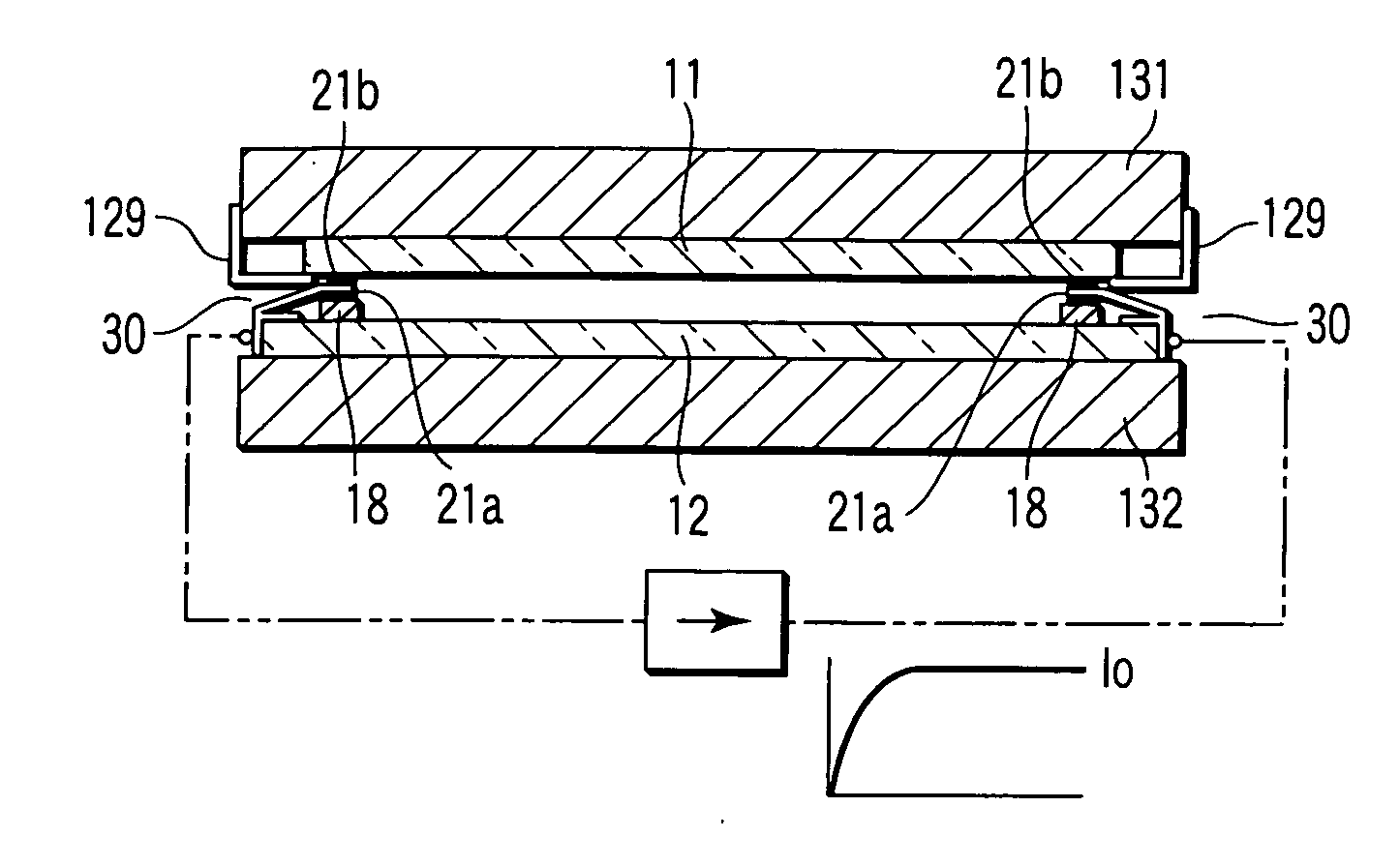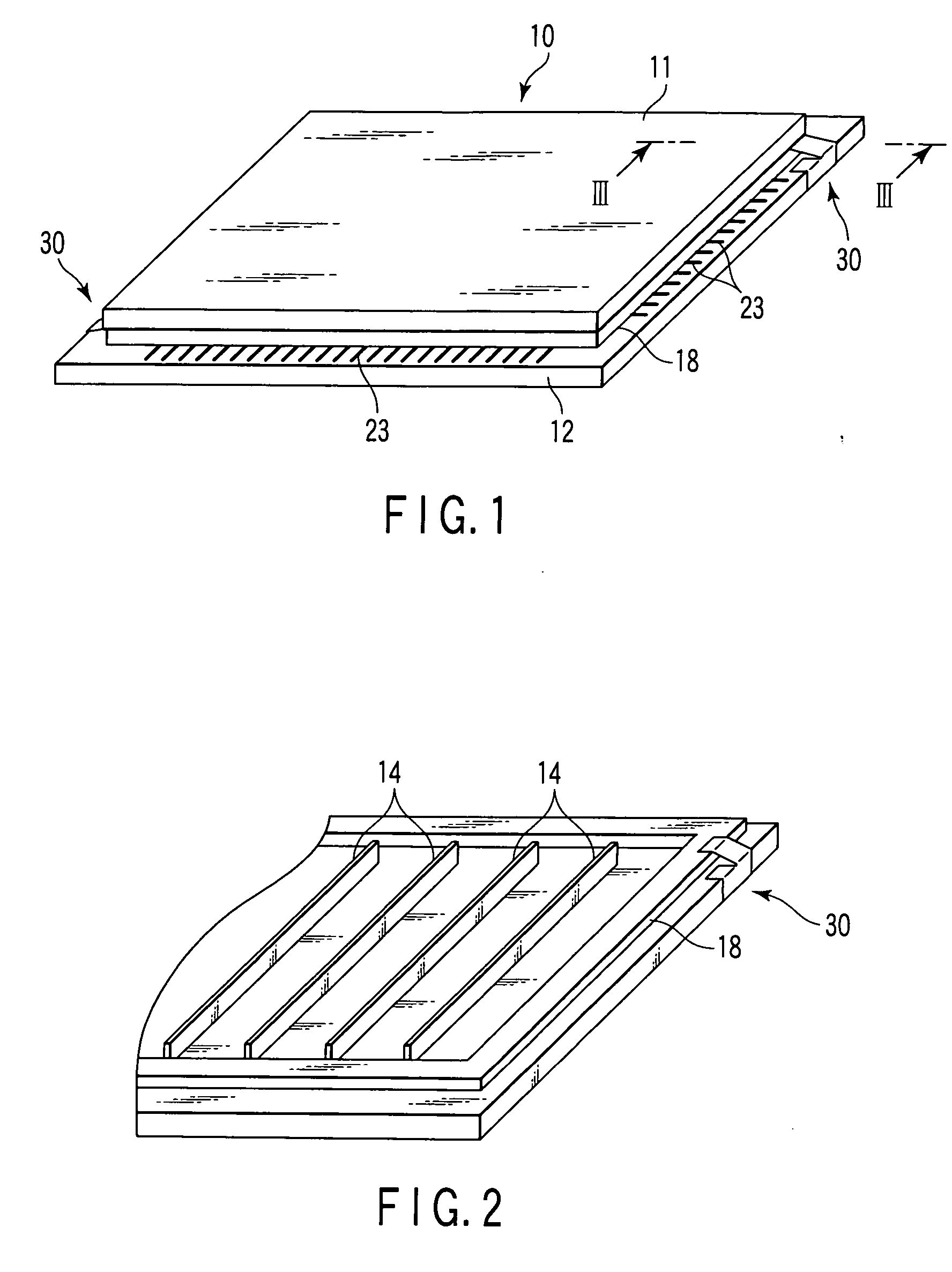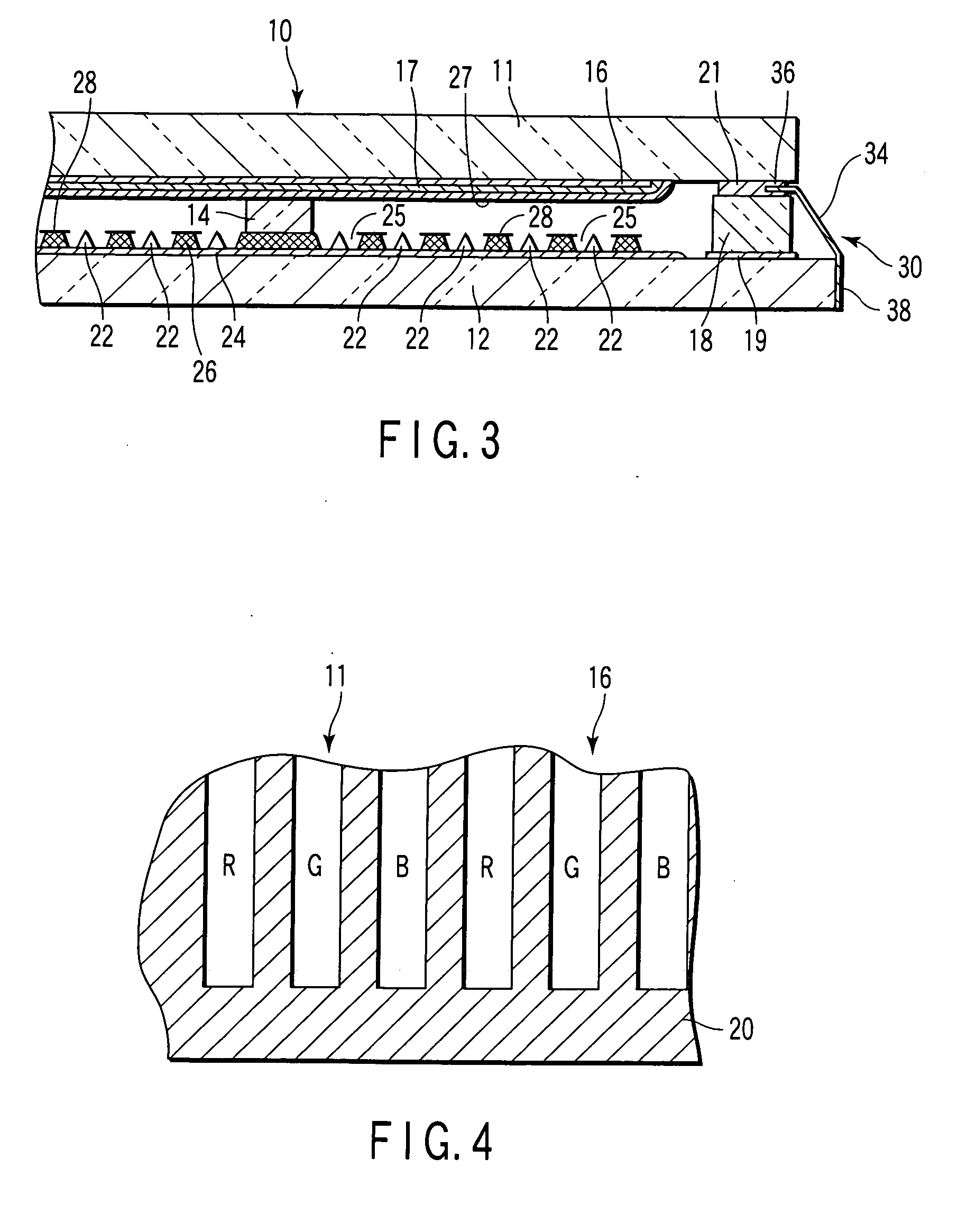Manufacturing method and manufacturing apparatus for image display device
a manufacturing apparatus and image display technology, applied in glass tempering apparatuses, electric discharge tubes/lamp manufacture, tubes with screens, etc., can solve the problems of unfavorable electrical conductivity, unstable coupling of substrates, and broken sealing materials, so as to achieve quick and stable sealing work of electrically conductive sealing materials
- Summary
- Abstract
- Description
- Claims
- Application Information
AI Technical Summary
Benefits of technology
Problems solved by technology
Method used
Image
Examples
first embodiment
[0051] An FED, which is an image display device, and a manufacturing method of the FED according to the present invention will now be described in detail with reference to the accompanying drawings.
[0052] As shown in FIG. 1 to FIG. 4, the FED includes a front substrate 11 and a rear substrate 12, each of which is formed of a rectangular glass plate. The front substrate 11 and rear substrate 12 are disposed to be opposed to each other with a gap of 1 to 2 mm. The rear substrate 12 has a greater size than the front substrate 11. Peripheral edge parts of the front substrate 11 and rear substrate 12 are attached via a rectangular-frame-shaped side wall 18, thereby forming a flat, rectangular vacuum envelope 10 in which a vacuum is maintained.
[0053] A plurality of plate-shaped support members 14 are provided within the vacuum envelope 10 in order to support an atmospheric pressure load acting on the front substrate 11 and rear substrate 12. The support members 14 extend in a direction p...
second embodiment
[0107] In the second embodiment, the power supply is executed in the state in which the front substrate and rear substrate are pressed on each other and the sealing layers are put in contact. Alternatively, after the sealing layer of the front substrate and the sealing layer of the rear substrate are supplied with power and heated and melted, the substrates may be pressed toward each other and sealed together. In this case, the two pairs of electrodes are mounted on the rear substrate, and one pair of electrodes are formed such that their contact portions contact the rear substrate-side sealing layer and the other pair of electrodes are formed such that their contact portions contact the front-substrate-side sealing layer.
[0108] In the second embodiment, the electrodes 30a and 30b are pushed upward by the power supply electrodes 137. Alternatively, the corner portions of the rear substrate may directly be pushed by a pushing mechanism that is separately provided on the assembly cham...
PUM
| Property | Measurement | Unit |
|---|---|---|
| current | aaaaa | aaaaa |
| current | aaaaa | aaaaa |
| DC current | aaaaa | aaaaa |
Abstract
Description
Claims
Application Information
 Login to View More
Login to View More - R&D
- Intellectual Property
- Life Sciences
- Materials
- Tech Scout
- Unparalleled Data Quality
- Higher Quality Content
- 60% Fewer Hallucinations
Browse by: Latest US Patents, China's latest patents, Technical Efficacy Thesaurus, Application Domain, Technology Topic, Popular Technical Reports.
© 2025 PatSnap. All rights reserved.Legal|Privacy policy|Modern Slavery Act Transparency Statement|Sitemap|About US| Contact US: help@patsnap.com



